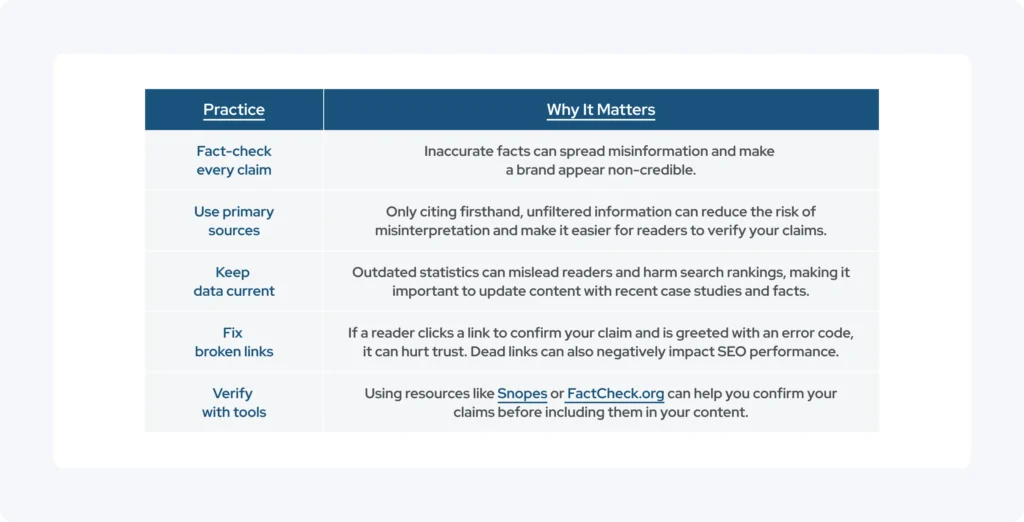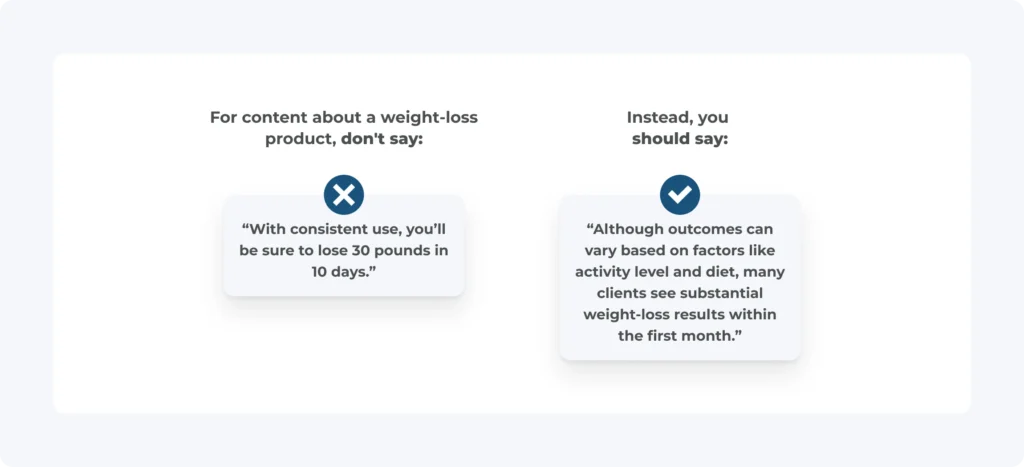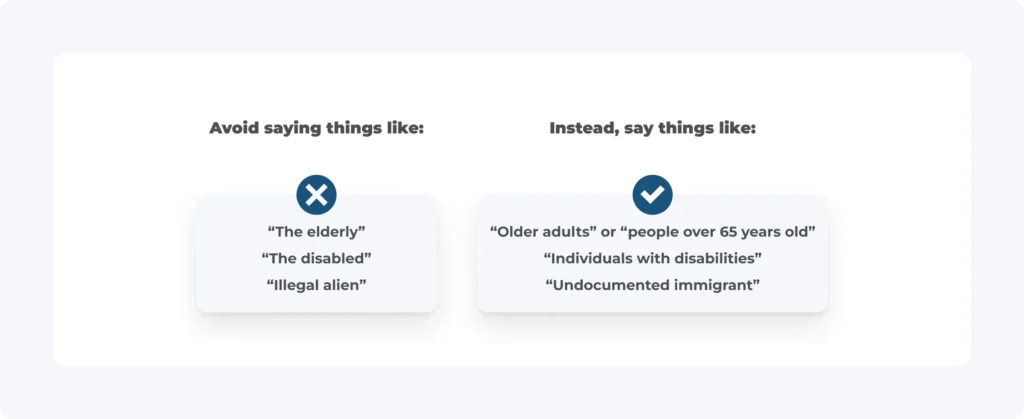Key Takeaways
- Creating ethical content for your brand can foster long-term trust with readers, build your credibility, and ultimately improve SEO performance.
- When writing blogs and service pages, writers should focus on being accurate, transparent, and mindful of their potential impact on readers.
- Responsible and limited use of AI programs promotes energy efficiency and ensures your content is original and accurately represents your brand.
- Incorporating inclusive, bias-free language can safeguard your brand’s reputation, ensure objectivity, and create a welcoming environment for readers.
Learning How to Write Content with Integrity
Ethical content creation requires writers to do more than just avoid plagiarism and check their sources. To build trust among readers, writers must ensure accuracy, promote transparency, and exercise care, especially when creating blog posts, service pages, or sales copy.
In addition to building trust, ethical writing can increase your content’s search rankings by appealing to search engines’ quality guidelines, like Google’s focus on E-E-A-T, which stands for Experience, Expertise, Authoritativeness, and Trustworthiness.
This framework is used by Google’s human reviewers, known as Search Quality Raters, to assess the quality of web content, and it is particularly important for content that features sensitive subjects, such as healthcare, safety, or finance. While E-E-A-T is not a direct ranking factor, it still plays a significant role in how Google determines which content is credible and, therefore, deserving of visibility.
This guide explores the connection between ethics and writing, covering some of the ethical problems with AI, giving alternatives to harmful terminology, and equipping you with tips for writing with integrity.
Ensure Accuracy and Dependability
Prioritizing content ethics means publishing only accurate, well-researched content. Misinformation can harm a brand’s credibility and diminish the effectiveness of your blog or service page over time. To extend the lifespan of a blog, it’s essential to source all of your information carefully.
The practices outlined in the table below can help you produce accurate and dependable content.

Prioritize Transparency
Being upfront about your intentions can make it easier to maintain trust. Therefore, some things that writers should clearly disclose in their content are:
- Affiliations
- Sponsorships
- Conflicts of interest
- Use of AI-generated content
Clearly labeling the instances above can help audiences understand what they’re reading and why certain components were included. Otherwise, undisclosed incentives or exaggerated claims have the potential to erode trust.
As an example, you could include a disclaimer that says, “This blog contains affiliate links, meaning our organization may earn a small commission if you purchase this product, at no additional cost to you.”
Practice Honest and Realistic Marketing Practices
Being transparent with your online web content also means avoiding misleading promises. With marketing in mind, it is easy to see why some people want to guarantee excellent results—it can make it easier to entice customers. However, ethical content should promote realistic expectations.
The following is an example of how content can be worded differently to avoid misleading clients.

Although content writers should be honest in every field, it is especially important to avoid offering guarantees in specific industries, such as legal services or healthcare. You should solely use testimonials and case studies that showcase real outcomes, and be upfront about these only being examples.
Respect Intellectual Property Rights
Ethical content creation involves giving credit where it’s due. Therefore, it is essential to cite sources properly, only use appropriately licensed or royalty-free media, and confirm that your content is free from unintentional plagiarism.
For example, if you’re embedding infographics, photos, or charts, double-check that the source allows anyone to republish their work. Otherwise, ensure you obtain explicit permission. Alternatively, you can create your own visual elements or hire a graphic designer to do so.
To ensure you are being respectful of property rights, some questions you should ask yourself before finalizing your content include:
- Did I credit any statistics or quotes used?
- Are all of the graphics I included either original, licensed, or royalty-free?
- Have I run my content through plagiarism checkers offered by companies like Grammarly or Copyscape to check for duplication?
Responsible Use of AI Tools
Today’s world is fraught with ethical issues surrounding the use of AI, from the lack of originality in the content it produces to the substantial environmental impact each output requires. Sure, in some cases, these pervasive programs can help streamline the content process; however, the ethical implications of AI make it crucial to use these programs wisely and avoid solely relying on AI to write your content.
Watch Out for AI-Fueled Biases
One of the main ethical challenges posed by AI-generated content is that it is prone to biases. Essentially all AI models, from ChatGPT to Gemini, can only reflect the data they’re trained on, causing them to reinforce existing biases inadvertently. Therefore, consistent human oversight is essential to correct these types of ethical issues with AI. Moreover, regularly reviewing all AI-generated content thoroughly can also help maintain consistency in style and tone, ensuring the final content accurately reflects your brand voice.
Understand the Computing Impact of Creating AI Content
Additionally, AI tools consume a substantial amount of computing power. Just training a large language model for use can emit as much carbon as five cars give off over their entire lifetime. AI also uses a substantial amount of water. By 2027, the world’s AI technology is predicted to consume up to 6.6 billion cubic meters of water annually, making it crucial to use AI tools sparingly and intentionally.
Three of the best practices for ethical AI usage are:
- Using AI as a starting point, rather than a final draft
- Reviewing all AI-generated content for correct tone and factual accuracy
- Disclosing AI involvement in content creation
Avoid Harmful Content
Content writers should avoid bias, stereotyping, and language that may alienate or misrepresent groups. Creating inclusive content can help your message reach a broader audience and protect your brand from potential reputational damage.
The table below shows some common phrasing that could be swapped for more palatable alternatives.

Before finalizing your work, always double-check that your language is people-first. You should also ensure your formatting supports accessibility for people with diverse learning styles. Create a logical structure by using clean headers and breaking up paragraphs with bulleted lists. Doing so can also help boost content readability.
Uphold Fairness and Impartiality
When writing about controversial topics or sensitive issues, content writers should present multiple viewpoints and refrain from taking a stance unless they clearly state that they are doing so. Remaining objective and maintaining a professional tone can build a writer’s credibility.
Some examples of ways to prioritize fairness and impartiality are:
- Avoiding implying shared experiences by writing in the third person
- Not using charged adjectives like “outrageous” or “ridiculous”
- Fairly presenting counterarguments, even if you disagree
- Specifying demographics instead of generalizing by saying things like “women ages 40–60” rather than “older women”
Taking the approaches above can give your content more authority and encourage open dialogue. Still, you should have a peer review your work to catch blind spots.
Protect Privacy and Confidentiality
Implementing real-life stories and testimonials is an important part of ethical content creation; however, in these scenarios, writers must take additional steps to protect personal information. Even when using anonymized stories, it is essential that sensitive information details can’t be traced back to specific individuals.
Some things writers should not publish without written consent are:
- Names
- Photos
- Identifying details
For example, saying “A small business owner in Oregon noticed a 45% traffic increase after applying our SEO strategies” can help you share valuable insight without revealing private information.
Implement Ethical SEO Practices
Ethical search engine optimization (SEO) is an important part of content writing—don’t just stuff keywords to boost search rankings or trick readers. Instead, implement ethical writing practices that still prioritize readability and reader engagement while boosting the value of content.
Some examples of SEO strategies that can support your ethical content are:
- Using relevant, intelligible keywords
- Writing meta descriptions that accurately summarize the content
- Prioritizing user experience over search engine rankings
Conversely, some examples of unethical SEO strategies to avoid include:
- Keyword stuffing
- Using deceptive headlines as clickbait
- Misleading readers by tying in unrelated topics
Build Trust Through Ethical Content
Ethical content creation is an excellent way for brands to build lasting trust with their audience. Ethical writing encompasses practices such as sourcing accurate information, respecting user privacy, and avoiding harmful language. It is also essential to combat ethical problems with AI by limiting the usage of such programs.
The best way to ensure your brand produces ethically sound content, from blogs to service pages, is by hiring a team of content writing professionals who understand how to intertwine ethics and writing. collystring has substantial experience in helping brands ensure consistent, accurate, and ethical content creation. Whether you need ongoing blog support or a refresh of your service pages, our skilled team can guarantee it is done properly.
Reach out to collystring to ensure your content is trustworthy, on-brand, and long-lasting.

